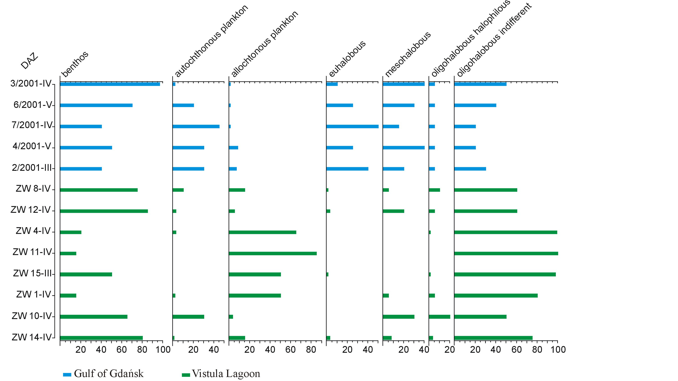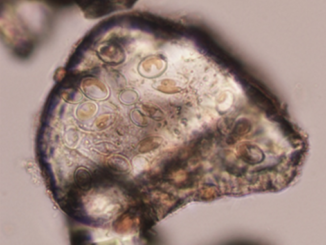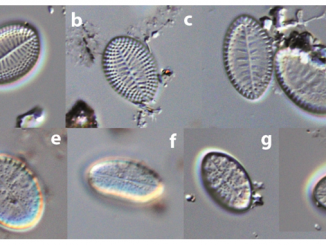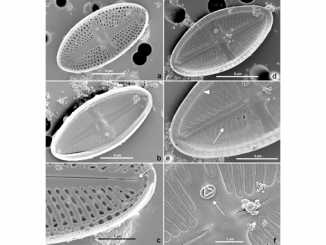
Paper category: Original research paper
Corresponding author: Małgorzata Witak (malgorzata.witak@ug.edu.pl)
DOI: 10.1515/ohs-2018-0016
Received: September 5, 2017
Accepted: October 27, 2017
Full text: here
Citation (APA style):
Abstract
This study describes the subfossil diatom flora in the surface sediments of the Polish coastal waters in relation to human impact. The material studied consists of the uppermost parts of seven sediment cores collected from the SW Gulf of Gdańsk and eight cores from the Vistula Lagoon. Our results show the present-day ecological state of both basins just before the planned construction of a navigable channel of the Vistula Spit, which will be the next factor affecting their hydrology. In different parts of the Gulf of Gdańsk, cultural eutrophication resulted in a distinct “anthropogenic assemblage” in the surface sediments. Its structure relates directly to the distance from the mouth of the Vistula River. In the surface assemblages of the Vistula Lagoon, the number of salt-tolerant diatoms increased with the salinity of the basin. Locally, a large number of pollution-resistant taxa was also observed.




Bądź pierwszy, który skomentuje ten wpis